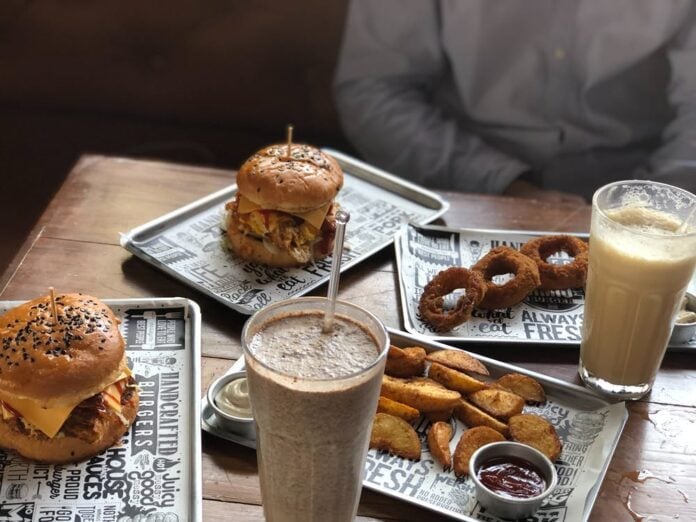Nutrition seems to be one of the most overcomplicated parts of a fit lifestyle and I’m not sure why. All you need to do is make sure to eat a balanced diet. Now, if things were really that simple, the U.S. wouldn’t have so many problems with obesity; fad diets wouldn’t pop up every other week, and reputable medical sources wouldn’t go back and forth on certain issues.
It’s time to take a simple approach by going back to the basics. Nutrition can be as simple or complex as you make it. And, if you make nutrition simple, it will be easy to follow a sensible lifestyle that will lead to a fit and lean body.
The reason nutrition gives people the most amount of trouble when trying to change their bodies is because of bad habits. Eating for emotional reasons, eating the wrong foods, eating too late—we eat for too many of the wrong reasons. We live to eat instead of eating to live.
Developing good eating habits is crucial for your success because it makes your transformation easier and faster. Don’t think of a nutrition plan as a “diet” because it’s not a “diet” as most of us define it. Too many people use the word “diet” to describe a temporary eating program that usually involves depriving or starving oneself.
Eating isn’t a temporary plan, but rather a way to eat for life. In addition, you shouldn’t be starving with a good eating style. In fact, eating six times a day is good. It keeps your metabolism high and helps burn more calories.
Six meals might seem like a lot, but consider this: Your metabolism is similar to a fire. If all the firewood is placed on the fire at one time, there’s a huge flame, but the fire burns out relatively quickly. HOWEVER, by continually feeding the fire with smaller amounts of firewood, a large flame is sustained for a prolonged period of time. By eating six meals a day, you continually fuel your metabolism, which does three things:
- Provides more energy throughout the day;
- Burns more calories;
- Curbs your appetite and eliminates the urge to binge.
Eating six meals a day also ensures consumption of the USDA recommended ratio of macronutrient consumption: Carbohydrate 55% Protein 25% Fat 20%. Here’s how: Just eat one portion of carbohydrates and one portion of protein six times each day. Then, add a serving of vegetables to three of the daily meals.
By using these portions, we get the USDA-recommended intake levels without having to calculate calories and ratios. A portion of carbohydrates is the size of your clenched fist. An example would be a baked potato. A serving of protein is the size of your palm or a normal deck of cards.
Now, it’s very important to mix a serving of protein and a serving of carbohydrates at each meal. Not only does it fill you up and provide the proper nutrients, but doing this also creates the maximum protein-sparing action. In other words, the protein repairs your muscles more efficiently. Mixing protein with your meals also slows the breakdown and absorption of carbohydrates further, and you stay full longer.
I don’t expect you to count every calorie and ounce of food; doing so would be difficult and annoying. Remember, we’re making eating simple. Instead, use portion sizes to get the right amount of food. Eating the proper portions provides the right amount of calories without having to count them.
The foods to eat are nutrient-dense, meaning each food is packed with more nutrients for a given number of calories. Eating these foods gives you more energy, decreases the number of calories consumed, and keeps you full. Now, if you’re trying to gain weight (in the form of muscle), then additional carbohydrates need to be added.
In three of your meals, add an additional portion of carbs. Yeah, I said carbs. Protein has its place, but consider this: When you work out, your muscles convert carbs into ATP (energy) to lift the weight—they increase performance. Carbs also hydrate the muscles. Ever wonder why they’re called CarboHYDRATEs? By neglecting carbs, you’re going to sacrifice performance and pump.
The Bottom Line
To lose fat, the bottom line is calorie consumption vs. expenditure. Consuming fewer calories than your burn—a calorie deficit—allows weight loss. Consuming more calories than you burn—a calorie surplus—encourages weight gain. A pure calorie deficit works well if you’re only trying to lose weight; however, often times that weight also comes off in the form of muscle.
Our goal is to replace fat with lean body mass. In order to do this, a calorie deficit can’t be maintained while you’re training. Enough calories must be consumed to fuel your workouts and provide your body with energy to create lean body mass. Restricting calories too much cuts out the nutrients needed to create lean body mass.
Another aspect we must not forget is where the calories come from. We could eat pizza, ice cream, donuts, etc., and get enough calories, but the vitamins, minerals, and nutrients—the stuff our bodies need to build lean muscle mass—just wouldn’t be there, and we’d starve because the foods wouldn’t fill us up.
By eating nutrient-dense foods, your body gets the nutrients it needs, while limiting caloric intake. The result: Lean body mass is enhanced while losing fat. If you’re trying to gain weight, add carbs, not more protein. Keep in mind that you might also have to add fat to your diet to get enough calories.


